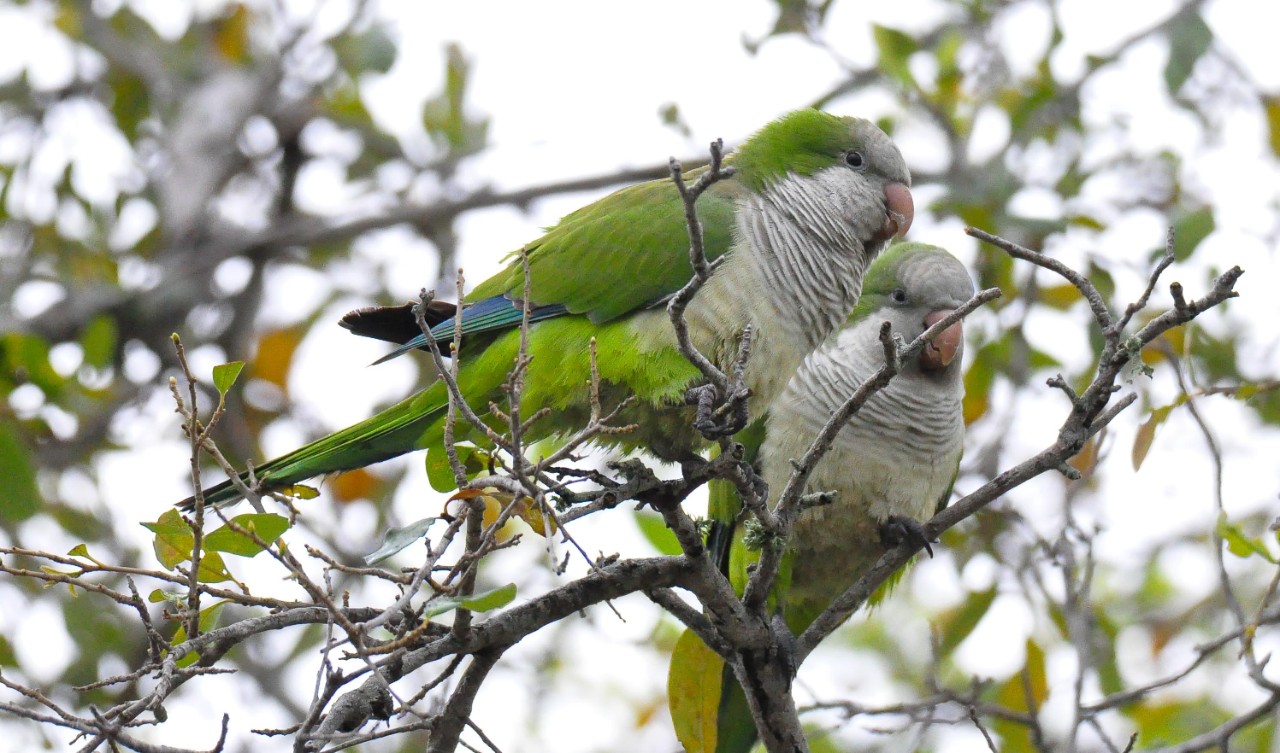
Scientific American: Parrots are taking over the world
UC researcher explains why parrots are so adaptable
Scientific American turned to a University of Cincinnati researcher to explain what makes parrots so adaptable, particularly in cities they share with people.
According to the magazine, at least 60 of the world's 380 parrot species have breeding populations outside their historic geographic range. These transplants are thriving in new places where they have learned to adapt.
“They're animals that are really social. They live in cognitively complex social environments,” Grace Smith-Vidaurre, a postdoctoral fellow at the University of Cincinnati, told Scientific American. “They're like humans in a lot of ways.”
Smith-Vidaurre studies birds in UC Assistant Professor Elizabeth Hobson's lab.
Monk parakeets, in particular, have adapted to city life in places like Chicago, New Jersey, and Brooklyn, New York. They were introduced to the United States from South America through the pet trade.
So far, concerns that monk parakeets would become an agricultural pest in the United States have not come true. Instead, they seem to enjoy city life.
Now Smith-Vidaurre is comparing the vocalizations of the U.S. birds to those found in their native South America. She found that the calls made by birds living in this noisy city soundscape are less complex than those found in South America.
“Something about their environment might be constraining their ability to produce or perceive these vocal signatures,” she says.
Read the Scientific American story.
Featured image at top: Monk parakeets perch in a tree in Cape Coral, Florida. These nonnative, invasive species are thriving in many cities across the United States. Photo/Michael Miller
More UC biology in the news

UC Assistant Professor Elizabeth Hobson works with a parakeet in a flight cage in Florida. Photo/Provided
Related Stories
UC public relations course reaches vulnerable community
December 19, 2025
Rather than having students find opportunities for real world applications of their degrees beyond class, why not bring it to them in the classroom? The public relations campaigns class, offered through the communications department in UC’s College of Arts and Sciences, gives students a taste of experience in the field.
Bazinga! UC physicist cracks ‘Big Bang Theory’ problem
December 19, 2025
A physicist at the University of Cincinnati and his colleagues figured out something two of America’s most famous fictional physicists couldn’t: theoretically how to produce subatomic particles called axions in fusion reactors.
UC undergraduate collaborates with Swiss university on drone research
December 19, 2025
Prissha Chawla, undergraduate student at the university of Cincinnati, is double majoring in computer science and statistics at the College of Engineering and Applied Science and College of Arts and Sciences. Now preparing to graduate in the spring of 2026, Chawla’s journey at UC has been full of impactful experiences. Since she arrived, she has had the opportunity to participate in a new international exchange program with a university in Switzerland, present at an international conference in Prague, co-op with Delta Air Lines, and much more.
